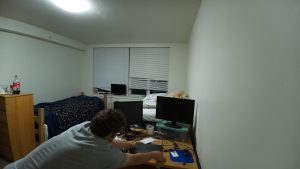Summary
Our group completed:
- Planning, creating, and practicing our Design Presentation
- Finalizing many of our design decisions that were previously up in the air
- Most importantly was our database choice. We have implemented a dummy version of our local database, but still have to properly figure out how to use the database we plan on using for our cloud backend, as well as how we will ensure its enclosed data remains secure.
- Securing the necessary resources for our model training.
- As we plan on training our own ML model, we will probably need something more powerful than a laptop cpu, nvidia jetson, or a raspberry pi. As cloud compute is expensive, we have found a friend who was willing to lend their gaming rig while they were not using it.
- Additional research on what object detection model to use
- We are now plan on using yolov11
- Some dataset engineering and testing, aiming to find out how to best train YOLO to meet our needs
- Completed tests with coco dataset
- Tried to use a pencil dataset to add functionality to the model, though will likely require further changes to improve future success
- Configuring out Raspberry Pis
- Capturing some initial manual testing data for using the raspberry pi cameras
What are the most significant risks that could jeopardize the success of the project? How are these risks being managed? What contingency plans are ready?
As it stands, our most significant risk is the performance of our ML object detection model, as the quality of our product is directly tied to its performance. These risks will be managed in the same ways that were listed in the presentation, notably by implementing querying pipelines that depend on the model in varying capacities, with some providing benefit even with not that good of a model.
A second risk is that we may potentially not have time to implement all of the infrastructure we want to support our 2 frontends and 2 backends, particularly depending on how much energy we want to focus into our ML model. This risk can be managed by first implementing one, simpler pipeline from start to finish, to ensure we will have something to show during our final presentation.
Were any changes made to the existing design of the system (requirements, block diagram, system spec, etc)? Why was this change necessary, what costs does the change incur, and how will these costs be mitigated going forward?
The main changes for this week involved solidifying some of our design choices, most notably our database choice. We plan on using sqlLite for our local backend, and amazon RDS for our cloud backend. This change was necessary because we otherwise hadn’t chosen any option yet. This change will also incur no additional costs, as we planned on using a cloud database for our cloud application to begin with.
A few other small components (such as our text to speech model choice) still would need to be solidified, but as they are not necessary for our mvp, and are very modular, we will defer these decisions for later.
Lastly, it may be worth looking into whether our entire application can feasibly be run locally on a jetson or Rpi. Since we will already need such a device to act as our camera, it would be convenient if our end user could just set up the machine, and not have to install an app on their computer to have the system fully running. There are many factors which will impact the feasibility of this proposal, such as how much we can optimize disk usage (the local platforms only have as much storage as an sd card, or ~64gb in our case), how much processing power is needed for all of the components to run concurrently, and how the latency of the components is affected by having everything running on the same machine.
Provide an updated schedule if changes have occurred.
No schedule changes are currently set in stone, but we will have to evaluate our priorities next week. In particular, we will want to discuss the feasibility and extent of which we will be able to get training data for our ML model for the sake of this assignment, as from an initial search, there do not seem to be existing datasets which will server our very specific needs.
As discussed above, there may be a few other small initiatives we may plan on investing time in.
This is also the place to put some photos of your progress or to brag about a
component you got working.




Our raspberry pi cameras are working – here are a very limited sample of some images we could later use to evaluate our object detection model.

One of our raspberry pi setups – this is very rudimentary, we hope to come up with something more appealing to comsumers in the future.
0 Comments